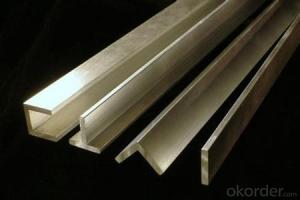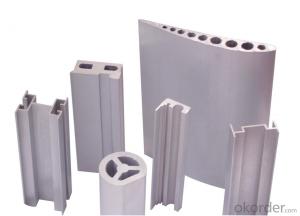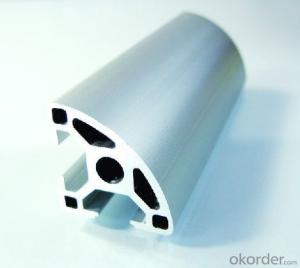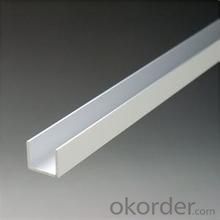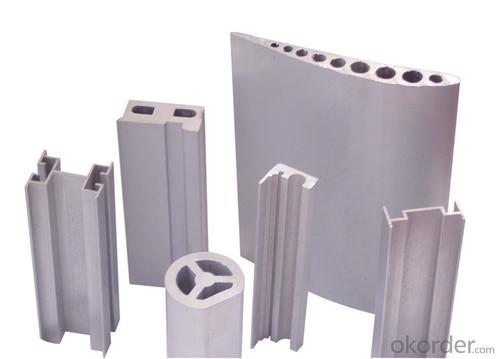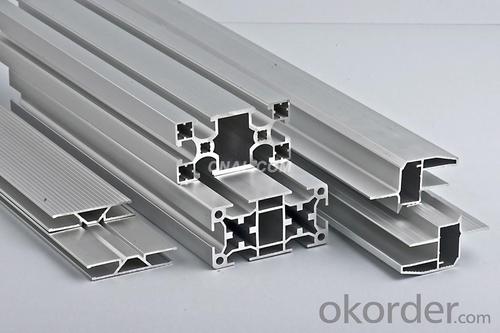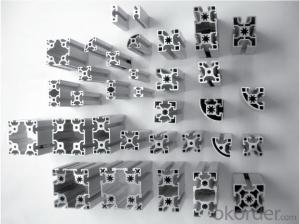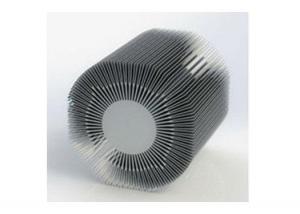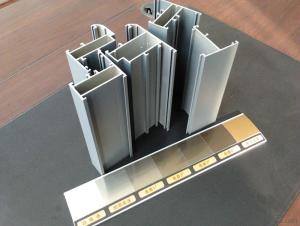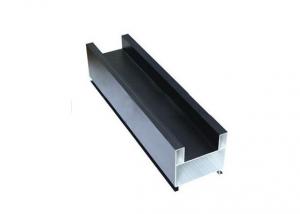Aluminum Profiles and Accessories - Good-Quality Industrial Aluminium Profile
OKorder Service Pledge
OKorder Financial Service
You Might Also Like
Aluminium is a relatively soft, durable, lightweight, ductileand malleablemetalwith appearance ranging from silvery to dull gray, depending on the surfaceroughness. It is nonmagnetic and does not easily ignite. A fresh film ofaluminium serves as a good reflector (approximately 92%) of visible lightand an excellent reflector (as much as 98%) of medium and far infraredradiation. The yield strength of pure aluminium is 7–11 MPa,while aluminium alloys have yield strengths ranging from200 MPa to 600 MPa. Aluminium has about one-third the densityand stiffness of steel. It is easily machined,cast, drawn and extruded.
Features:
Material | Alloy 6063,6061,6005or according to customer’s choice |
Temper | T3, T4, T5, T6 |
Surface | Anodize, electrophoresis, powder coating, PVDF coating, wood grain painting, matted, etc. |
Length | Coating 6.5 meters, Anodizing 6.5 meters, Mill finish 5 meters |
Application | Industrial, electrical equipment(TV set, air conditioner, refrigerator, computer), decoration,construction, transportation |
Custom Made | We can package following with customer's request. |
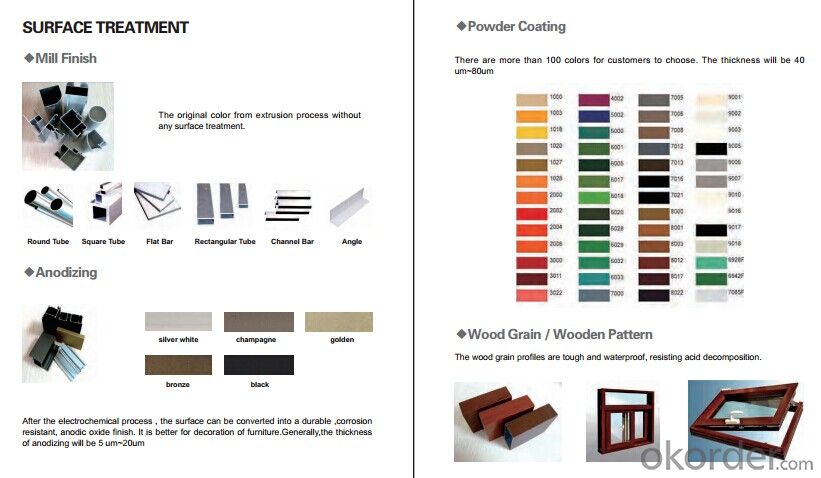

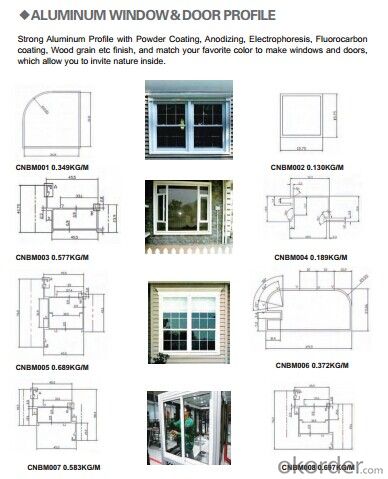
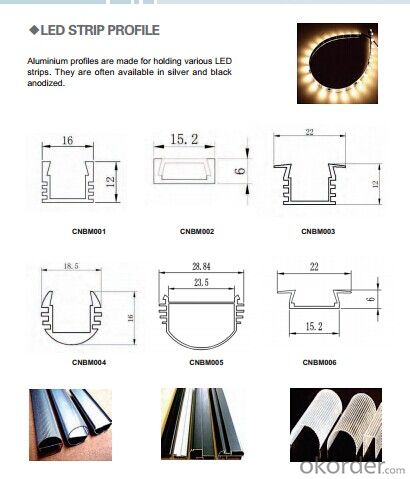
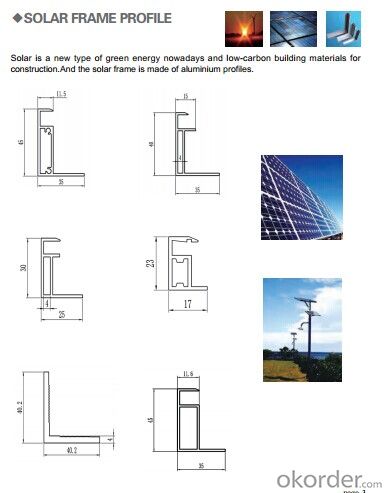
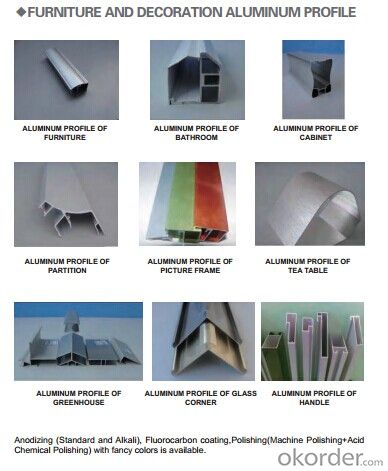
- Q: Can aluminum profiles be used for creating protective enclosures?
- Yes, aluminum profiles can be used for creating protective enclosures. Aluminum is a lightweight, durable, and corrosion-resistant material, making it suitable for various applications, including protective enclosures. Aluminum profiles can be easily fabricated and assembled to create custom enclosures of different shapes and sizes. They provide excellent structural integrity and can withstand harsh environmental conditions. Additionally, aluminum profiles offer good thermal conductivity, allowing for efficient heat dissipation if required. Overall, aluminum profiles are a popular choice for creating protective enclosures due to their versatility, strength, and durability.
- Q: Can aluminum profiles be used for display cases or cabinets?
- Yes, aluminum profiles can be used for display cases or cabinets. Aluminum is a versatile and durable material that can be easily customized and fabricated into various shapes and sizes. It offers excellent strength-to-weight ratio, corrosion resistance, and a sleek modern appearance, making it a popular choice for display cases and cabinets in both commercial and residential settings.
- Q: This question asks for a comparison of the benefits and drawbacks of utilizing aluminum profiles in the construction of roofs.
- <p>Aluminum profiles in roofing offer several advantages, including their lightweight nature which reduces structural load, high corrosion resistance making them suitable for various climates, and ease of installation which can lower labor costs. They also have a long lifespan and can be recycled, contributing to sustainability. However, there are disadvantages such as higher initial costs compared to traditional materials, potential for dents or damage from impacts, and the need for regular maintenance to preserve their finish and prevent fading. Additionally, aluminum can be noisy during rain or hail, and it may not be as thermally efficient as some other roofing materials, potentially requiring additional insulation.</p>
- Q: What is the difference between the type 4040c and 4040d of aluminum profile?
- Sometimes there are differences in wall thickness, and sometimes there are differences between strengthening and non strengthening.
- Q: Are aluminum profiles suitable for cleanroom applications?
- Yes, aluminum profiles are highly suitable for cleanroom applications. Aluminum is a non-corrosive and lightweight material that is easy to clean and maintain. It offers excellent strength and structural stability, making it ideal for constructing cleanroom walls, partitions, and equipment. Additionally, aluminum profiles can be easily customized and integrated with cleanroom components such as doors, windows, and ceiling grids. Overall, aluminum profiles provide the necessary properties to meet the stringent requirements of cleanroom environments.
- Q: Can aluminum profiles be used in railway and transportation infrastructure?
- Yes, aluminum profiles can be used in railway and transportation infrastructure. Aluminum is a lightweight and durable material that offers several advantages in these applications. One of the main benefits of using aluminum profiles in railway and transportation infrastructure is their low weight. Aluminum is significantly lighter than other materials like steel, making it easier to transport and install. This weight reduction can also lead to energy savings, as less fuel is required to move the infrastructure elements. Additionally, aluminum profiles have a high strength-to-weight ratio, meaning they can withstand heavy loads while still being relatively lightweight. This makes them suitable for various structural applications, such as supporting overhead power lines, constructing platforms, and forming the framework for bridges and tunnels. Aluminum also has excellent corrosion resistance, which is crucial in railway and transportation infrastructure exposed to harsh weather conditions and environmental elements. Aluminum profiles can withstand moisture, UV rays, and other corrosive agents, reducing maintenance requirements and increasing the lifespan of the infrastructure. Moreover, aluminum profiles can be easily fabricated and customized to meet specific design requirements. They can be extruded into various shapes and sizes, allowing for flexibility in design and construction. Aluminum profiles can also be easily joined together using different methods, such as welding or fastening, providing ease of assembly and disassembly if needed. In conclusion, aluminum profiles can indeed be used in railway and transportation infrastructure. Their lightweight, high strength, corrosion resistance, and versatility make them an excellent choice for various structural and functional applications in these sectors.
- Q: Are aluminum profiles suitable for high-temperature environments?
- Aluminum profiles are generally unsuitable for environments with high temperatures. Despite its excellent thermal conductivity and lightweight nature, aluminum has a lower melting point compared to other metals. At temperatures exceeding 400°C (752°F), aluminum begins to soften and can eventually lose its structural integrity. In high-temperature surroundings, aluminum profiles can experience deformation, distortion, or even complete failure. This can jeopardize the stability and functionality of any structure or system relying on aluminum profiles. Nevertheless, there exist specific aluminum alloys that are specifically engineered to withstand higher temperatures. Alloys like 6061 and 7075 have enhanced heat resistance and can endure higher temperatures without significant damage. These specialized alloys are commonly employed in applications requiring resistance to elevated temperatures, such as aerospace components or certain industrial processes. However, it is essential to thoroughly evaluate the temperature requirements of a given environment before utilizing aluminum profiles. In extremely high-temperature settings, alternative materials like steel or refractory metals may be more appropriate due to their higher melting points and superior heat resistance properties.
- Q: Can aluminum profiles be used for display systems?
- Certainly, display systems can indeed make use of aluminum profiles. The lightweight and sturdy characteristics of aluminum make it a popular option for such systems. Its versatility allows for easy customization to meet the specific needs of the display system. Frames, shelves, stands, and other components of the display system can all be created using aluminum profiles. Moreover, aluminum profiles are resistant to corrosion, making them suitable for both indoor and outdoor display applications. Furthermore, they provide a sleek and contemporary aesthetic, enhancing the visual appeal of the display system. In conclusion, aluminum profiles are a trustworthy and effective choice when designing and constructing display systems.
- Q: This question asks for guidance on selecting the appropriate aluminum profile for a construction project.
- <p>To choose a suitable aluminum profile for your building project, consider the following: First, assess the structural requirements such as load-bearing capacity and span. Second, consider the aesthetic preferences and the desired finish or color. Third, evaluate the environmental conditions the profile will be exposed to, such as weather resistance and corrosion. Fourth, consult with suppliers or manufacturers for technical specifications and recommendations. Fifth, ensure compliance with building codes and standards. Finally, factor in the cost and availability of the profiles. It's often helpful to consult with engineers or architects who can provide expert advice tailored to your specific project needs.</p>
- Q: Where is the exact location? TwentyBecause I was doing aluminum sales, want to go to the market!Where is the specific market aluminum sales, as long as there is, I have to go around! Say where it is! For example, what area, what road, how many?! Since I went to Chengdu for the first time, please tell me more about it. Thank you!
- 512 building materials market 'The two ring road north station over there direction
Send your message to us
Aluminum Profiles and Accessories - Good-Quality Industrial Aluminium Profile
OKorder Service Pledge
OKorder Financial Service
Similar products
Hot products
Hot Searches
Related keywords

